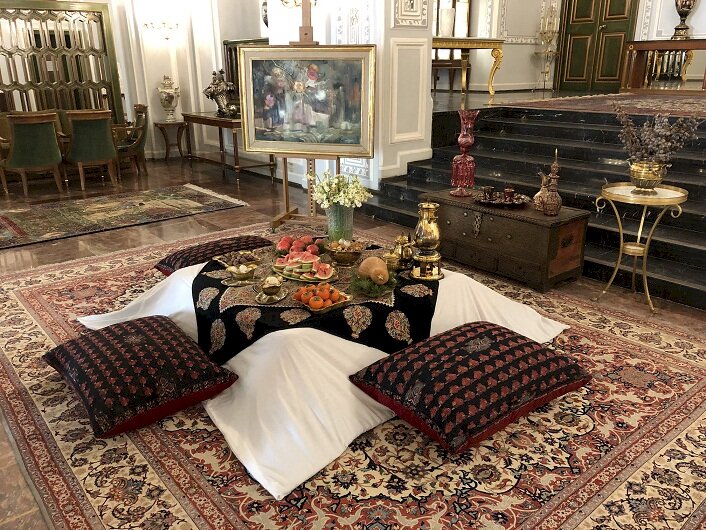Niavaran museum displays rarely-seen objects of treasure trove

TEHRAN – Tehran’s Niavaran Museum has put on show sets of rarely-seen relics associated with Yalda Night from its treasury, CHTN reported on Wednesday.
Bringing together intangible and tangible heritage rooted in Iranian culture and preserving a traditional ritual in a cultural and historical setting is part of the reasons for setting up the Yalda Night spread in this museum.
One of the highlights is a special spread traditionally used to decorate a Korsi, featuring historic silver dishes as well as Iranian handmade products, which is displayed in the collection, the report added.
Korsi is a 50-centimeter high four-legged table with a heater underneath it, and blankets and comforters are thrown around it. It is usually decorated with a piece of jajim or kilim carpet. Some cushions and poshti (a kind of cushion leaning against the wall) are also put around Korsi.
In the past, the heating source was a fire pan in which, the coals are put when fired. Families with lower income made a hole beneath Korsi and put the coals in that. However, Korsi was not a mere heater in Persian culture. Its pleasant warmth brought all the family together. They ate winter goodies and listened to each other. During nights, grandparents told stories and narrations while all families sat at Korsi.
Korsi had a crucial part during the Yalda celebration. Also called, Yalda Night, the occasion is celebrated on the eve of the winter solstice, which falls on the last day of Azar (the last month of autumn in the Iranian calendar year). On that graceful night, the winter chill is vanquished and the warmth of love embraces the entire family. It’s a time for pleasant family reunions that entails laughter, merriment, and good cheer.
Niavaran Cultural-Historical Complex, covering an area of about eleven hectares, is composed of several landmark buildings, museums, and monuments constructed in the 19th and 20th centuries during the Pahlavi and late Qajar eras. The history of the palace complex stretches back to about 280 years ago when Fath-Ali Shah of the Qajar Dynasty ordered for a summer residence to be built over the then countryside area of the capital. The two-story Ahmad Shahi Pavilion is one of the highlights of the complex.
ABU/AFM
